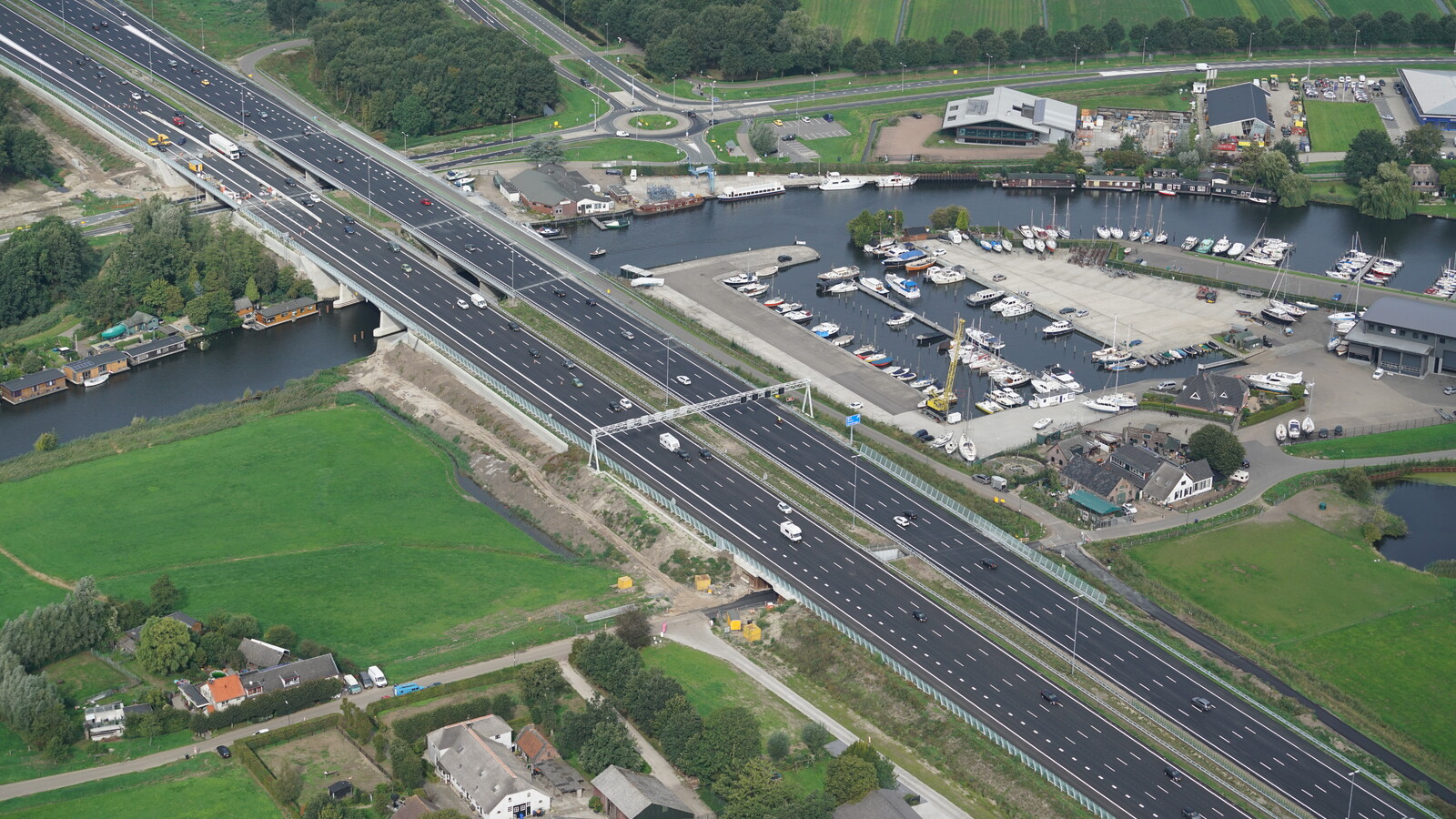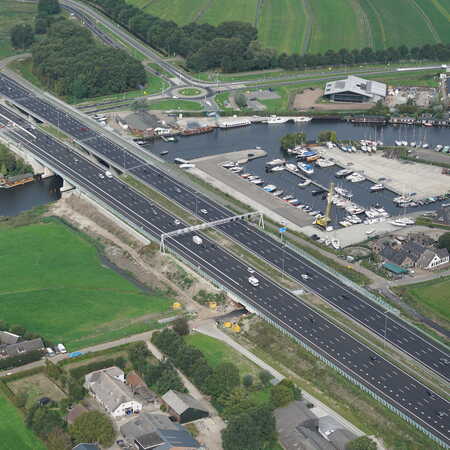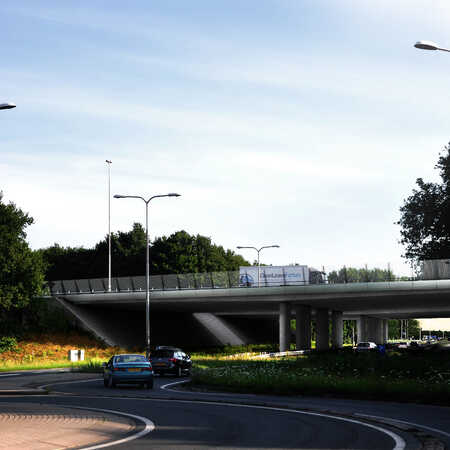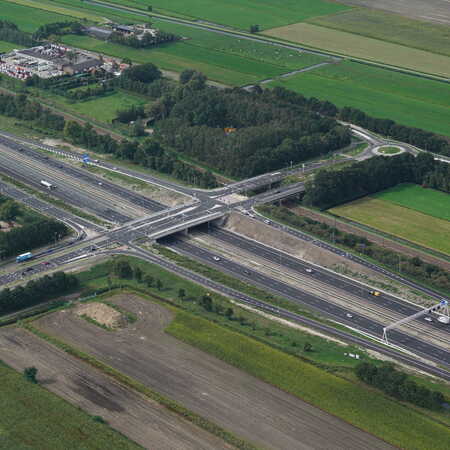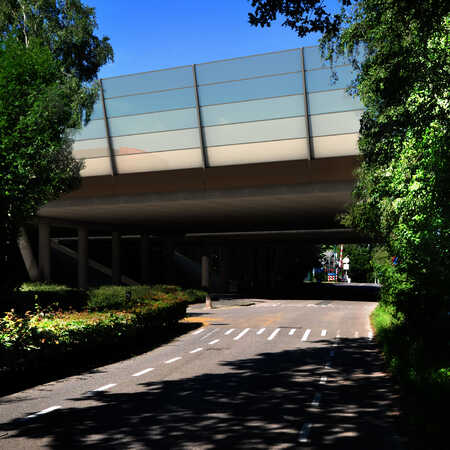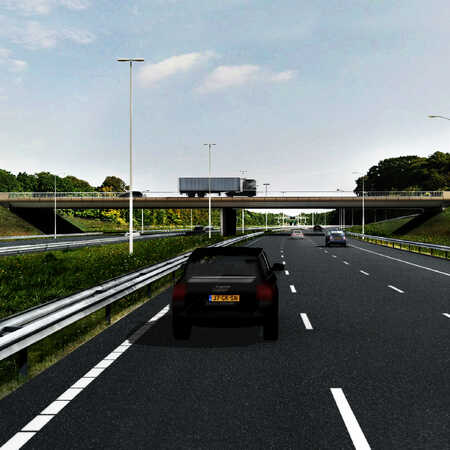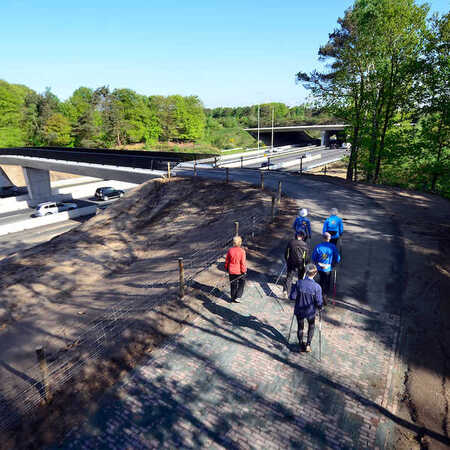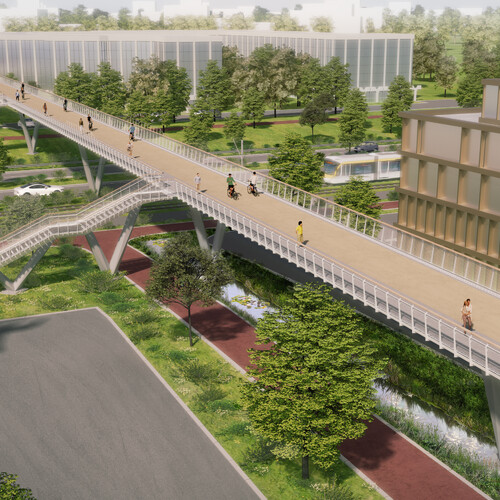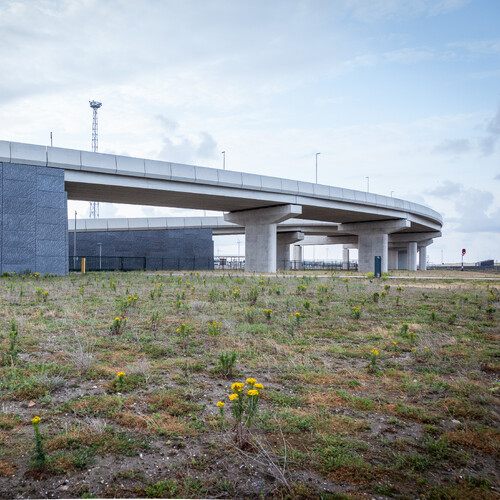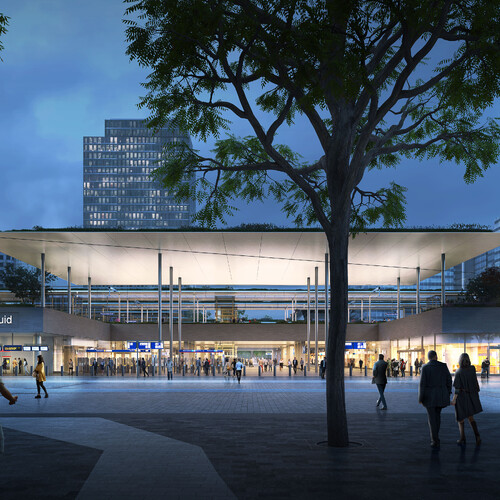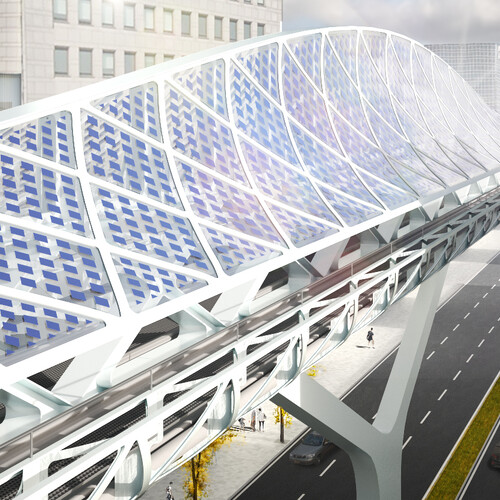Routing design
Not many people know such a thing even exists, but the motorway A27 (from Breda to Almere) has a routing design described by the Dutch Road and Transport Authority. What it is, is a list of characteristics and requirements that the designs of the flyovers, sound barriers and other elements of and nearby the motorway have to meet. Architects ZJA is involved in the definition of the trajectory design of the A27 on the section between Utrecht North, the intersection Eemnes and the connection Bunschoten - Spakenburg.
Densely populated area along the A27
In a relatively densely populated area it is difficult to merge the wider motorway into the landscape and to take into consideration that not only the motorists are to have a safe, quiet driving experience with a clear view, but that also the residents nearby the motorway should experience minimal inconvenience.
The design ZJA provided for this stretch of the motorway A27 aims to find subtle additions and adaptations to the existing structures of the viaducts and flyovers, in order to underplay the expansion of the motorway as much as possible, using balanced ratios between volume and light. The thickness of the deck, the shape and distance between columns, the choice of material and applied coating, everything plays a part in creating a natural look.
A motorway and its environment
Especially when little space remains, a perfect merge of a motorway in its environment is of crucial importance. The sound barriers need to have sufficient height, but not so much that they will through shadows on residencies close to the A27. At every location an optimal proportion between these two factors will have to be found. The soil retaining walls in the slopes were adapted and made much steeper in order to use less space and prevent the clearing and removal of trees and shrubbery. Similar to the viaducts, the sound barriers demand an understated coherence and transparency to yield the best result. The optimal design makes itself invisible. Hardly anyone will notice the design choices made here, because they are meant to look self evident and natural.
The A1 and the open landscape
The A1 too, from the intersection Eemnes to the connection Bunschoten-Spakenburg is widened. The main difference is that the A1 does not have a sharply defined routing design and runs through a much more open and spacious landscape. The design ZJA provided profited from this freedom. Here, the Dutch polder and the prominent presence of the Dutch skies provide the main spatial experience. That is the reason the sound barriers are more transparent on this section. On the south side of the A1, facing the town of Baarn, they are overgrown with climbing vines.
The viaducts on this part of the motorway have decks with an edge that is coated with a satin gloss, so they reflect the colors, the light and the green surroundings in a softer way, blending better with the landscape. The shapes are curved and flowing. The relationship between motorway and landscape may not be superficial and casual.
Improving the ecology
Widening the motorway offers opportunities to improve the ecology. A so called fauna tunnel Monikkenberg was built under the A27 just south of the railway Hilversum - Amersfoort with muddy pools and low shrubs, that allows amphibians, reptiles, bats and of course deer to wander around the area and feed. Softening the banks of waterways and creeks and the introduction of different shrubs and plants in the green borders along the A1 improves the survival chances of frogs, mice, snakes and butterflies and enriches the ecological zone around the river Eem.
Yes, a motorway and its immediate environment are a matter of design too. And not just in a technical sense. There is also the objective to give the landscape due attention, to offer the motorists a clear overview and make sure the residents experience minimal inconvenience, and for this one needs a self-effacing touch of ingenuity. We might not realize it when whizzing past at a hundred twenty kilometers an hour, but the Dutch motorways are carefully designed viewing machines.
Principal: The Dutch Road and Transport Authority
Client: 3Angel (Heijmans, Fluor, 3i Infrastructure)
Year: 2016 - 2018
Photographs: The Dutch Road and Transport Authority, Ton Bosboom, AEROVISTA
Project: #1014
